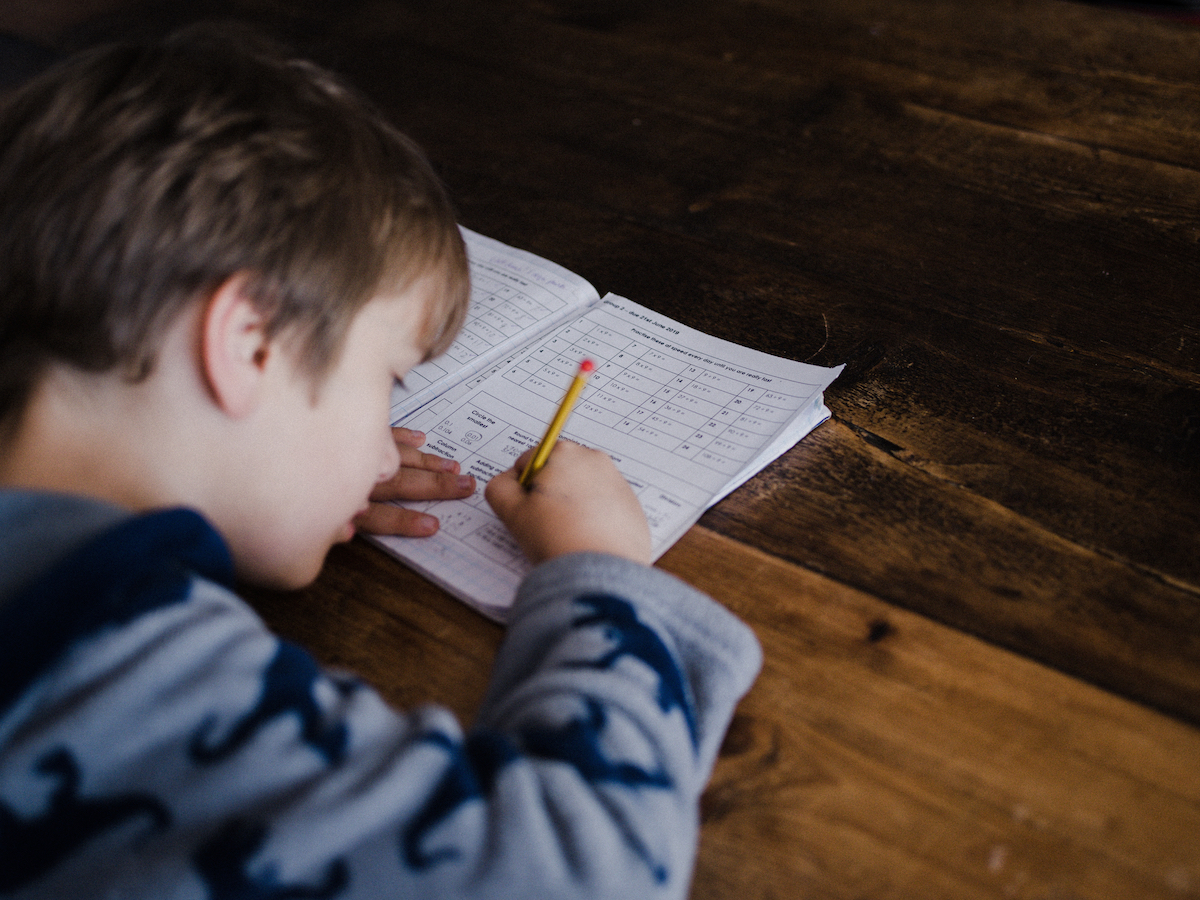
Photo by Annie Spratt on Unsplash
This article by Liv McConnell first appeared on Fairygodboss and has been republished with permission.
With so many schools across the country closed — and little reason to think they’ll be reopening anytime soon — parents today are forced to get creative about managing their children’s educations at home.
For many parents, this means attempting to help their children navigate online learning tools and digital classrooms that educators themselves have only just gained access to. That task comes for some in addition to doing their best to maintain digital productivity levels while working from home. But for still others, contending with online learning alternatives for their children isn’t even an option.
An overwhelming majority of public school districts don’t have the resources to offer online learning alternatives while closed, and many of their students would have difficulty accessing these programs even if they were an option. Roughly 12 million students today lack internet access at their homes, and online learning tools aren’t always inclusive of non-English speaking students or those with disabilities. Plus, for parents who are still required either by virtue of their professions or financial pressures to work outside of the home during this crisis, children may be left with little supplemental oversight, creating an additional obstacle for virtual learning.
It’s all enough to make educators and researchers fear a further widening of resource-influenced achievement gaps — and to create added pressures on parents to compensate. That’s why Pamela Templin, a San Francisco-based instructional designer and mom of three, decided to share tricks of the trade she’s picked up after 14 years of homeschooling her kids through grades pre-K to 12th. Here’s what she had to say.
1. Try time blocking.
To one mom who’s currently homeschooling a pre-K child and 4th grader, Templin advised structuring her day in clear blocks of time.
“Schedule two blocks of time that are larger — morning and afternoon, for 1-2 hours or whatever you can manage. Then, schedule mini-blocks of time for check-ins,” she said. “At the a.m. block, go over the day’s assignments they are to do. Answer any questions, demonstrate methods, and try to start/finish any assignments that require your hands-on time. Then at the mini-check ins, they show you what they have finished, what they have left to do and what they are struggling with.”
The afternoon block, she added, is for checking over the work they’ve finished during the day, going over unfinished work and embarking on any assignments that may take longer, like reading or writing assignments.
2. Create structure however you can.
Kids are accustomed to having a lot of structure in their school days. While it's impossible to totally replicate that, Templin urges finding structure wherever possible, in schedules and in physical spaces.
"I was lucky enough to have a room I could go into and put a sign on the door," she said. " That was the signal that it was work's turn for my attention, and that unless someone was hurt or something on fire, that they should not interrupt. Giving them something to do in that interim time will help."
In the end, holding onto structure will help both them and you.
"They are used to having a schedule they know and can depend on, and adults often need that, too," she added. "The best plan is to tell them that and work together."
3. If you’re working from home, be transparent with your team about your schedule.
“Set these time blocks on your calendar, and let your boss, team or coworkers know,” she said. “You may have to move the times around a little to juggle work meetings.”
Chances are, if you're a parent who is able to work remotely during this crisis, you aren't the only person on your team or in your company dealing with these challenges. Frank communication will go a long way in ensuring that everyone's needs are met and time constraints are respected.
4. Be frank with your children, too.
“As odd as it sounds, approach your 4th grader like a coworker,” Templin said. “Inform them when the time must change. Stress that your work is important, just as theirs is, and that you will do your best not to interrupt their work (or play, if they’ve finished all their work) and that you expect the same, unless it’s an emergency.”
The “easiest way to madness,” she added, is by thinking you can keep boundaries between your job and your homeschooling responsibilities fluid.
“Kids need to know they have your full attention, but work also wants full attention,” she said. “You have to communicate to your kids when you will be giving them your full attention, and when it's work's turn. “
5. See crises (like this one) as a potential learning opportunity.
During the time they were homeschooling their kids, Templin’s husband had a heart attack. To help her kids understand what had happened, she dedicated a curriculum to discussing the heart with her kids and how it functions.
“The key for us was to use age-appropriate terminology and be as factual as possible. If I was homeschooling my kids currently, I would most likely follow the same method,” she said. “Kids will want to know what this means for them and those they care about… How you present this information to them will depend on who they are, but I would certainly say it is best to never lie to them about serious things. That's not to say you can't be selective in how you present the information, but don't lie.”
6. Incorporate hands-on learning where you can.
Virtual learning demands more screen time from children, which is simply a reality of the world we're living in right now. If you're concerned about the amount of time your child is spending in front of a screen, though, Templin advised it might be smart to approach limits that are guided by their age.
"Online schooling is a bit more challenging for younger children, as a lot of their learning is physical, interactive and quickly cycled to cater to their shorter attention spans," she said. "For older children, a lot of the learning is personal, cerebral and longer, which fits better with online presentations."
If you have the desire, time and ability to work hands-on learning into your child's day, Templin offered a few suggestions.
5 off-screen learning ideas
1. "Look for design plans online and have them recreate a building, machine or vehicle using Legos or craft supplies. For older students, you could have them write a report on why the machine or vehicle couldn't have been built sooner and the effects it had on society or the world, or for a building, what is unique or important about the design."
2. "Have them draw scenes from historical books they may be reading or recreate famous paintings with a report about the artist and the time in which the work was created."
3. "Remember dioramas? Some kids still love to do those. Have them recreate an event in history or a scene from the book they are reading."
4. "For those kids who can sew, you could have them try to recreate clothing from the book or time period."
5. "Likewise, you can have them research recipes for food of the time and try making it. Or they can try to learn or recreate music, singing and dancing from that era."








